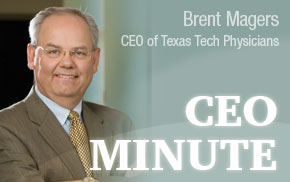 Chris Tomlinson is a good journalist who writes for the Associated Press. I want to
give him proper credit for some of these interesting facts, which I gleaned from a
column he wrote after attending a legislative hearing with representatives of the
Texas Health and Human Services Commission regarding Texas Medicaid. The column was
in Texas newspapers this past weekend.
Chris Tomlinson is a good journalist who writes for the Associated Press. I want to
give him proper credit for some of these interesting facts, which I gleaned from a
column he wrote after attending a legislative hearing with representatives of the
Texas Health and Human Services Commission regarding Texas Medicaid. The column was
in Texas newspapers this past weekend.Did you know, for example, that more than 2.5 million Texas children are enrolled in Medicaid and an additional 583,000 qualify for the Children’s Health Insurance Program? Medicaid covers 226,000 underprivileged parents who make less than $2,322 a year. For a child between 1 and 5 years old to qualify for Medicaid, they must be part of a family that makes less than 133 percent of the federal poverty level, which is $25,975 a year for a family of three. Once a child turns 6, the threshold changes to 100 percent, or $19,350 a year. In Texas, 83 percent of the nearly 4.2 million people on Medicaid are either children or elderly and 55 percent female.
The disabled make up the second largest group receiving Medicaid. They qualify at 74 percent of the poverty level, or $8,500 a year. More than 418,000 adults qualify and most cannot work, while others require constant care. As we all know, most people age 65 or older qualify for Medicare. However, Medicare does not cover everything and seniors must make copayments. This is where Medicaid comes in for those who are also covered by Medicare. They are the dual eligible. Medicaid covers certain copayments when the elderly earn less than $8,500 a year, unless they need a nursing home. Then they qualify if they make less than $25,278 a year, about 320,427 people in Texas.
More than 93,000 pregnant women who earn less than $21,256 a year qualify for Medicaid until after they give birth. Medicaid pays for 55.9 percent of births in Texas. While children and pregnant women make up the majority of people on Medicaid, more than half of the money is spent on the elderly in long-term care and the disabled. A person who is eligible for Medicaid must sign up with one of the health care companies Texas pays to manage the program. These are companies like First Care, Superior and Amerigroup — all of which we accept. State lawmakers set the rates at which doctors are paid and it is the opinion of many that those rates are too low. Medicaid patients are finding it increasingly difficult to find a doctor who accepts Medicaid. The Texas Medical Association reports that about 31 percent of Texas physicians accept all new Medicaid patients compared to 67 percent in 2000. Texas Tech Physicians is pleased to serve this group of citizens.
Who is not covered by Texas Medicaid? It does not cover single, childless adults. Nor does it cover legal or illegal immigrants. The Affordable Care Act is intended to simplify Medicaid and expand coverage to everyone, except non-citizens, who earn less than 133 percent of the poverty level. That would add 2 million Texans to Medicaid rolls who currently do not have any form of health insurance. And even though Medicaid is a matching program (roughly 60 percent federal and 40 percent state) Texas lawmakers must pay careful attention to Medicaid spending since it makes up about a quarter of the state expense budget.
For several years, I served on the statewide Frew Advisory Committee, which concerned itself with Medicaid. I think all of these facts are interesting and relevant to our work.
Have a good week!
